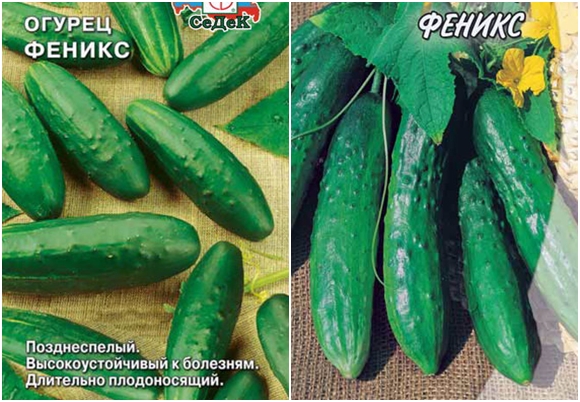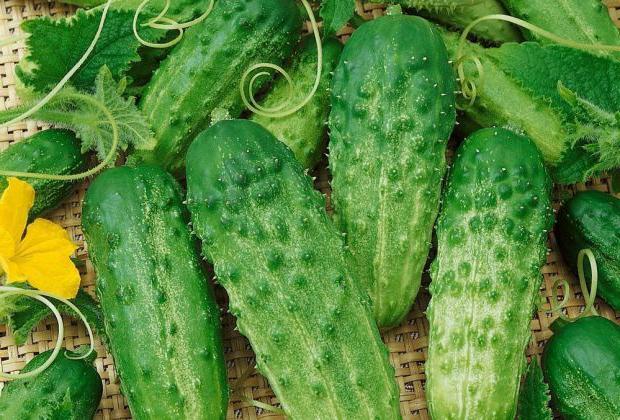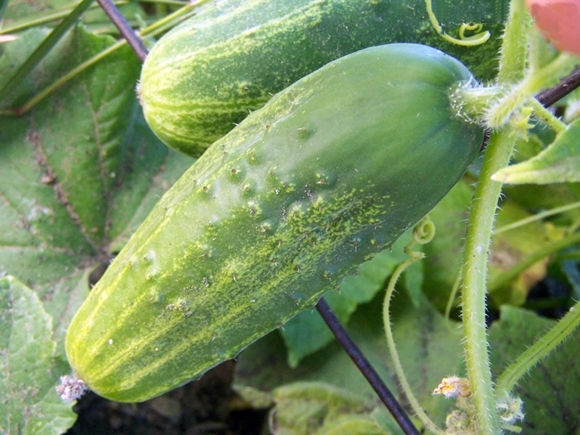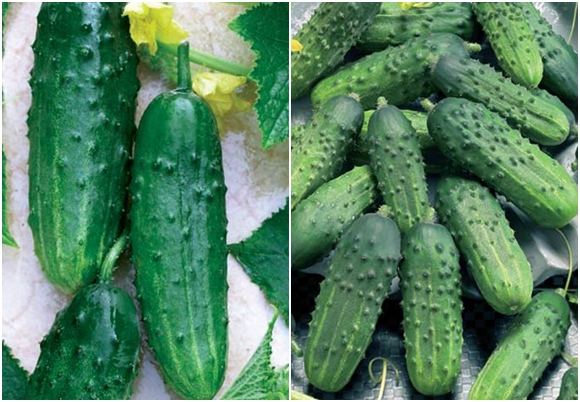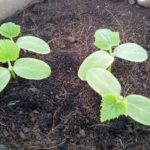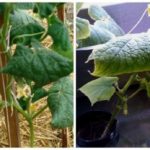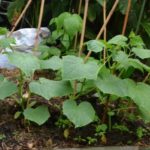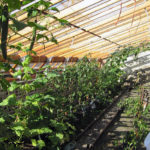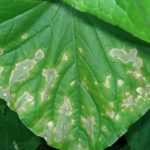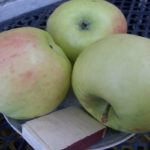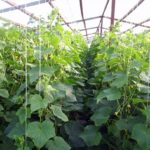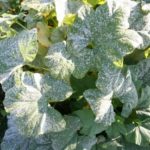Phoenix cucumbers, one of the best Russian varieties, were bred in 1990. First, a cucumber variety appeared with the designation 640, and then a sonorous name arose, which has a logical explanation. Like a mythological bird, culture was reborn again after exposure downy mildew on cucumber tops. In addition, vegetables have demonstrated their resistance to another unpleasant virus - cucumber mosaic. The name of the cucumbers “Phoenix 640” and simply “Phoenix” is one variety, registered in the register in 1993 under the second.
Just a year after the “Phoenix” cucumber variety was developed, farms were enriched with new seeds after its propagation. The breeders did not stop there, and on the basis of “Phoenix” F1 hybrids arose, with properties of the corresponding orientation: with the absence of dependence on pollinating insects, resistance to diseases, and improved taste characteristics.
Characterizing "Phoenix"
This culture is considered universal. Vegetables are optimal for both direct meals and pickles; they successfully resist the diseases mentioned above. Another basic characteristic of these cucumbers is their vigorous growth. The length of the stem can reach three meters, and the bush itself is distinguished by its power and strong branching.
According to the type of flowering, this variety is predominantly female, the ovaries are fascicle-shaped, and the leaves are classic green.
Based on the time required for cucumber to ripen, the variety is classified as late-ripening. It begins to bear fruit 55 days after the initial shoots, or later. Pollination of crops is carried out by bees. "Phoenix" grows optimally in open ground, although film shelters can also be used. The crop continues to bear fruit until the first frost.
In terms of yield, up to 5 kilograms of vegetables are harvested per square meter. If the crops are tied up and cucumber leaves are formed, the variety produces more fruit. And for additional branches on the side, you can pinch the main stem.
About the characteristics of the Phoenix fruits
The description of the Phoenix cucumber variety will be incomplete without characteristics of the fruit:
- Cucumbers are strong, large in size up to 16 cm, with a shape between a cylinder and an oval.
- The fruit pulp is juicy, the skin is delicate.
- The cucumbers are crispy and dense and contain no bitterness.
- The fruits are green in color with light stripes along them and white spines.
- In cross section, cucumbers acquire a rounded-triangular shape.
- Each fruit can weigh up to 170-180 g, and up to 5 cm in diameter.
- The culture can be stored in Russian conditions for up to two weeks.
It is recommended to collect the fruits after one or two days. Vegetables quickly outgrow and lose their taste characteristics. And how much moisture and nutrients they take in to form ovaries and bloom.
About the Phoenix variety
The Phoenix breeder created a variant - the Phoenix Plus cucumber. This variety is associated with the category of mid-season, begins to bear fruit after 45 days of seedling growth, and is recommended for the North Caucasus, Central Black Earth regions and the Lower Volga. It is characterized by medium height, medium branching and mixed flowering properties.
Phoenix Plus cucumbers, in comparison with the classic Phoenix, are distinguished by smaller bushes and fruits, a complete absence of bitterness, a more numerous number of female flowers and earlier fruiting. True, there are negative reviews from some gardeners regarding the unsuitability of cucumbers of this type for pickling.
About soil, fertilizing, fertilizing, watering cucumbers
As for the soil for cucumber planting, it is saturated with humus and without stagnant water, with an acidity level of no more than 7. If the soil is considered strongly acidic, then liming is performed in the autumn season. The location for the crop should be full sun with protection from drafts; it should be planted in warm soil for the plant to acquire immunity.Cucumbers grown under cover are placed in 3 seedlings, and if it is open ground, then in four.
When digging up the soil to plant a crop, organic fertilizers are introduced, and when the third true leaf appears and the ovaries form, nitrogen is introduced. A mineral substance based on nitrogen and potassium is given a couple of times during the growing season.
“Phoenix” is predisposed to regular feeding, it is important that it is both mineral and organic. If you take an infusion from bird droppings, manure or plants, then greater formation of green mass occurs, and mineral substances will contribute to the formation of fruits. Data on Phoenix indicate a successful test of ready-made mineral assistants for crops, such as Kemira Plus, which prepares the plant for enrichment with fruits. Cucumbers gain 30% more strength and stamina.
As for watering, the following nuances are observed:
- Water moderately until ovaries appear;
- 40-50 liters of water per square meter during the growing period;
- Reduce watering during cold weather;
- Only warm water is used for irrigation.
If for some reason it is not possible to regularly water, then mulching with various materials is used for the soil, which will protect the soil from often unnecessary loss of moisture.
About the basic principles of growing "Phoenix"
- Cultivation allows the use of seeds or seedlings in heated soil.
- It is advisable to prepare the beds in the fall with the necessary organic fertilizer.
- Planting involves thoroughly loosening and leveling the ground.
- If seeds are sown, they are disinfected and protected in the garden bed with film until germination.
- Sowing is possible both in rows and in a checkerboard pattern.
- Ready seedlings should have 3-4 leaves and are usually a month old.
- It is recommended to treat seedlings 7 days before planting with growth stimulants such as Zircon or Epin.
As optimal predecessors for cucumbers Tomatoes, legumes and potatoes are considered.
And once again about the advantages of “Phoenix”
Cucumbers of the “Phoenix” variety have become very widespread in our country both in vegetable farms and in summer cottages. There is a good reason for this - a description of its worthy features:
- Resistant to cold and dryness.
- Optimal flavor content – unusually juicy and sweet crispy fruits.
- A variety pollinated by bees, flowering type is female.
- Universal use of ripened vegetables in cooking.
- Resistance in combination to cultural diseases.
- Presentation of high quality from 93%.
- Duration of the fruiting period.
Phoenix" is able to bear fruit well and grow in greenhouse conditions, hotbeds, and open ground beds. It has established itself as a reliable and stable vegetable that does not require regular watering. And the results of the harvest grown by your own hands will make you happy with abundance and optimal taste in salad, salted and pickled forms.

